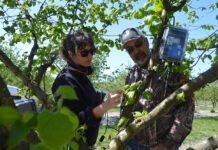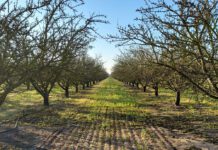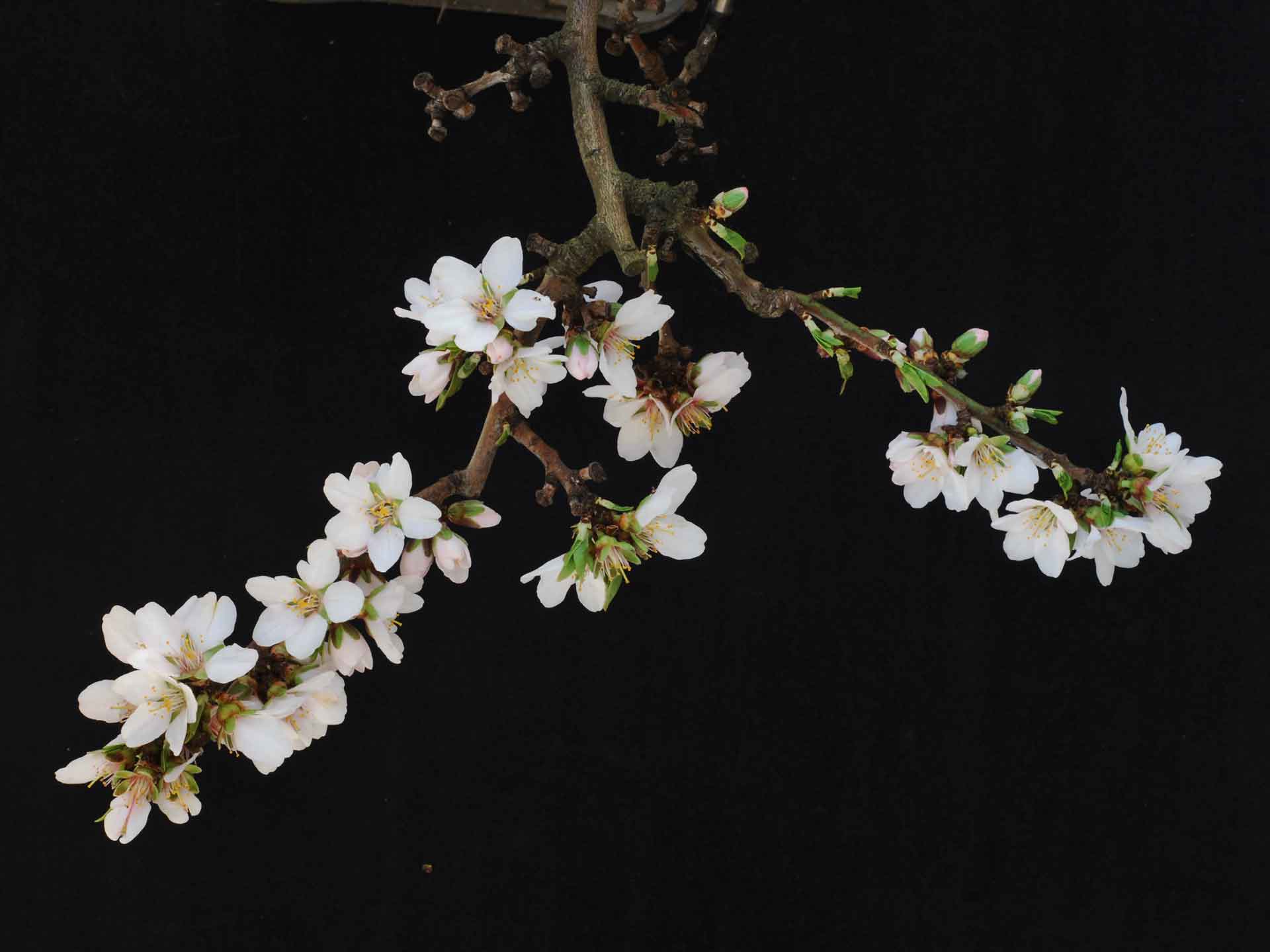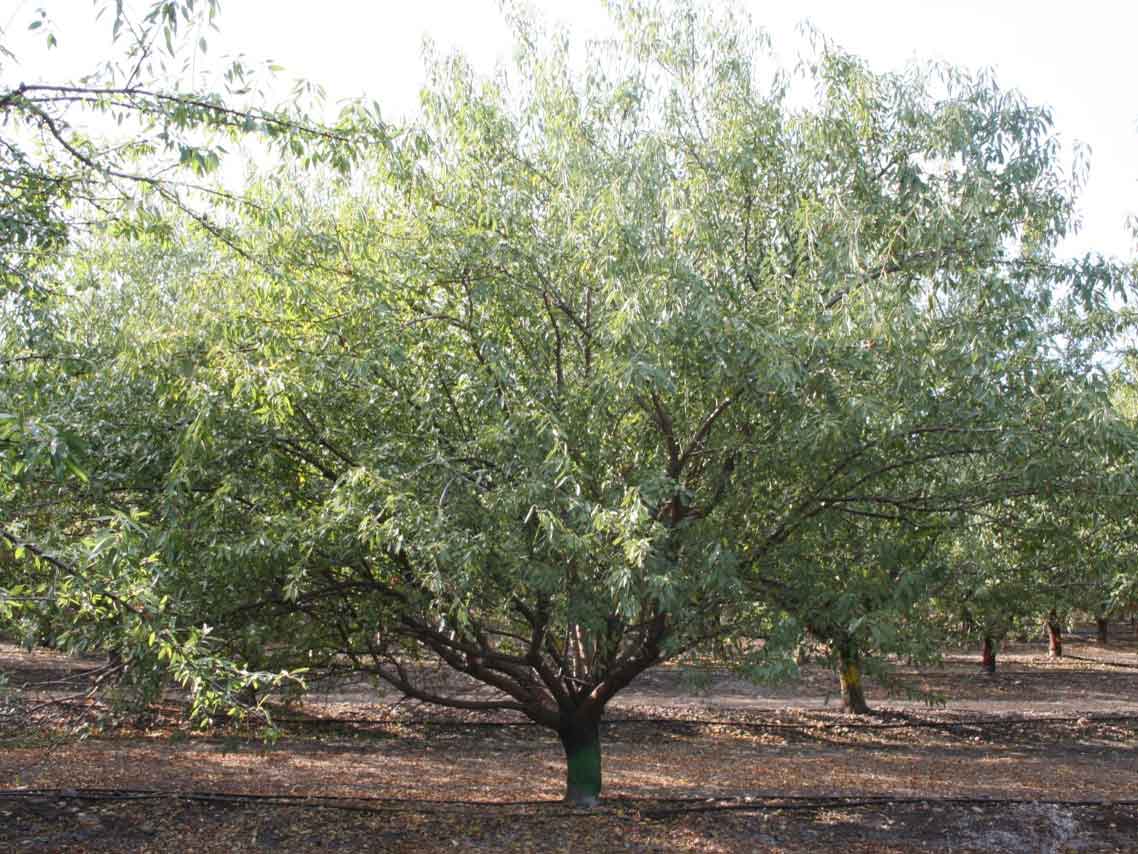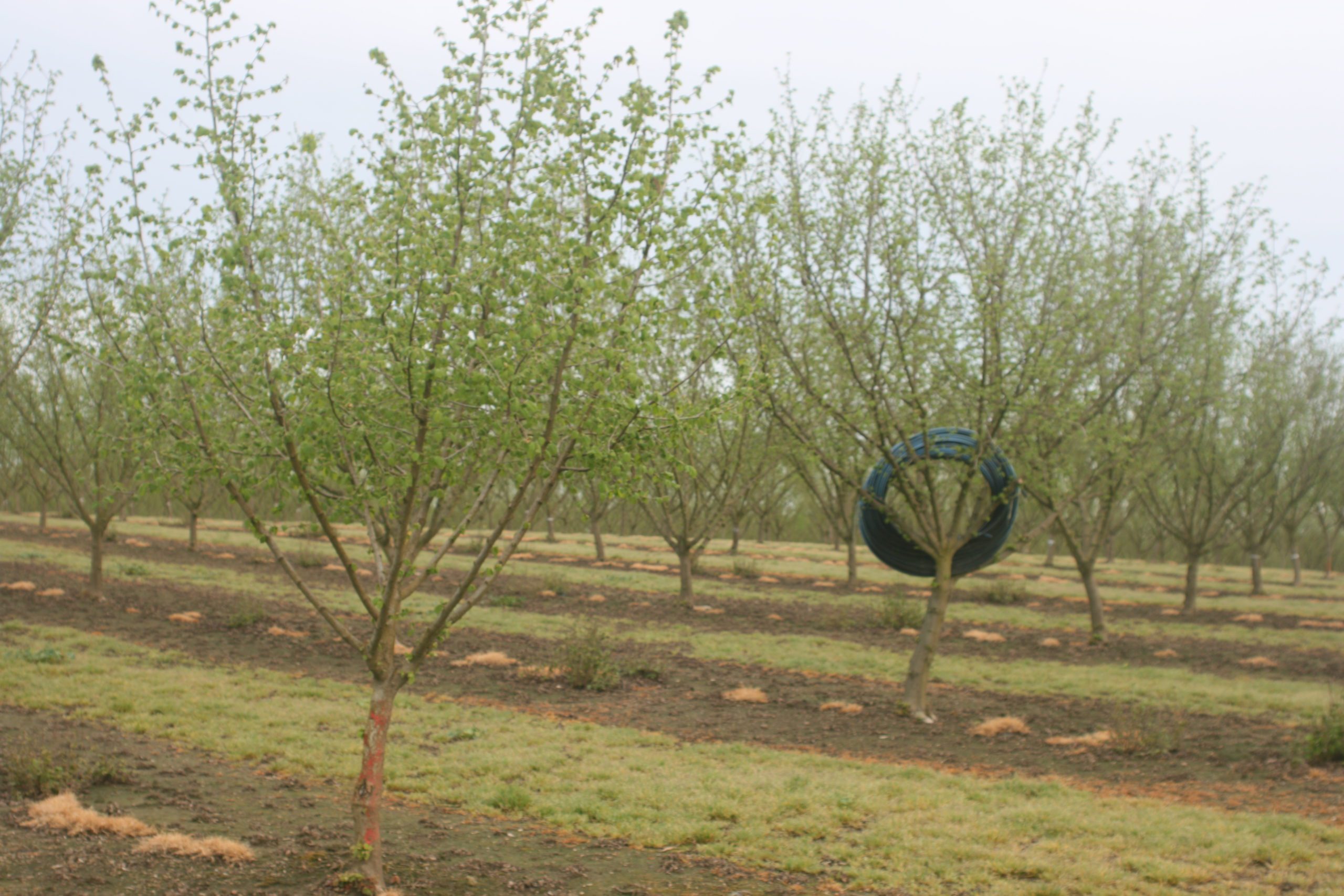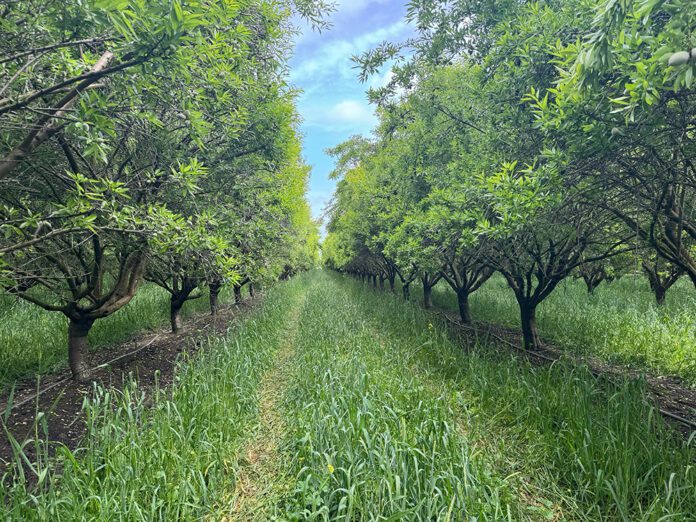
In 2013, neophyte almond grower Andrew Carroll had a lot of questions about crop production.
“That’s how we have always done it,” wasn’t an acceptable answer for him.
At a cover crops workshop in March, Carroll said his early observations in orchards led him to the conclusion that adding more synthetic inputs to improve soil health was not solving poor water infiltration and other soil problems he was seeing in orchards. Erosion and high soil temperatures with bare ground in the summer were common problems and affecting yields. He said there were orchards where he could barely push a shovel into the soil six inches, yet there was standing water after an irrigation.
Today, as a grower with a few more years of experience behind him and operator of EcoThrive Farm Management in Chowchilla, Calif., Carroll said his adoption of planted and managed cover crops in his orchards has proven positive effects on soil health and economic benefits.
“Soil biology is inflation-proof. No one can take that away. Worms are free employees and help the soil function properly,” Carroll said.
Carroll admitted his neighbors were highly skeptical of his management practices in the early years of his efforts in planting cover crops, but as his orchard soil profiles improved, his input costs began to decrease.
He said that, in the beginning, he was paying $1,600 per acre annually for soil amendments and applying 225 to 250 units of nitrogen. Multiple pesticide applications were needed.
A few years after planting cover crops, he found water infiltration rates increased along with soil moisture capacity due to a higher level of organic matter. Less N was required to produce acceptable yields. Over a span of three years, his production costs were reduced by $600 per acre.
Last summer, after a three-week spell of triple-digit temperatures, Carroll made these observations in his orchard where cover crops protected the orchard floor: trees were still putting out new growth, water demand was 20% below evapotranspiration levels and trees were not stressed. Following harvest, he said a fifth leaf Nonpareil/Monterey block had a production cost of $2,600 per acre and yielded 1,800 pounds per acre with nut sizes 25 and 27. His net profit per acre was $1,576.
“Stop chasing the biggest yields, start chasing efficiency and balance,” Carroll advised.
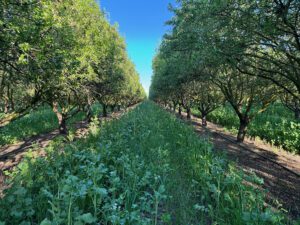
Technical Advice
Longtime cover crop proponent and California Ag Solutions President Silas Rossow provided some technical advice on cover crop adoption including his version of BEI:
• Encourage biodiversity with cover crops to improve soil microbiology, nutrient cycling and resilience
• Enhancement, boosting soil organic matter, moisture retention and fertility through regenerative practices
• Integration, seamlessly incorporating cover crops into orchard systems to maximize soil health, optimizing inputs and improving profitability.
A cover crop, Rossow explained, has multiple plant species that provide additional rooting structures, microbial and fungal life to the soil, increasing the plant diversity compared to an otherwise narrower spectrum of diversity.
Rooting structures of multiple cover crop plant species is one of the key factors in soil health. Winter annual legumes, biennial and perennial legumes, summer annual legumes, winter annual grasses, summer annual grasses and brassicas all contribute unique components to what Rossow described as a team with each member having different functions.
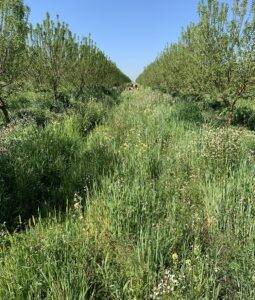
Timing the planting of cover crops ahead of root growth in an orchard provides energy, supporting new growth. Rossow said he also encourages pushing termination of cover crops as far as possible to keep roots in the ground to benefit soil health.
A planted cover crop in an orchard has a positive effect on the water cycle, Rossow explained. The root systems create macropores that improve water infiltration and reduce runoff during winter rains. Deep-rooted species like radish and cereals break up compacted layers, enhancing subsurface moisture distribution. The mulching effect from terminated cover crops shades the soil, reducing evapotranspiration in summer months. Cooler soil temperatures maintain microbial activity in the soil, optimizing root function and nutrient uptake. Rossow explained when soil temperatures reach 100 degrees F, 85% of soil moisture is lost through evaporation and transpiration compared to a 70-degree F soil temperature where 100% of the moisture is used for growth.
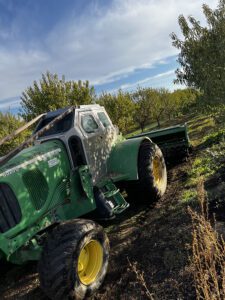
Species Differences
Different cover crop species also have a positive effect on the nutrient cycle. Deep-rooted species like radish, mustard and rye mine the subsoil for nutrients and make them bioavailable for almond trees by bringing the nutrients higher in the soil profile. Rossow noted that cover crop root exudates feed soil microbes, accelerating organic matter decomposition and nutrient mineralization.
Cover crop effects on the water and nutrient cycles provide another benefit: disease and pest resistance. Microbial populations in the soils can suppress soilborne pathogens. Rossow explained beneficial fungi can outcompete pathogenic soil fungi, including Phytophthora and Fusarium. Bacillus and Pseudomonas bacteria produce antibiotic compounds that suppress root disease. Brassica cover crop species also have activity over soil pathogens, releasing biofumigant compounds.
Flowering cover crops increase insect predator populations of lacewings, lady beetles and parasitic wasps. The ground cover also encourages spiders and the navel orangeworm predator Goniozus legneri.
Allowing native vegetation to grow in row middles does not provide the same level of soil health benefits and nutrient cycling as an intentionally planted multi-species cover crop, Rossow said.
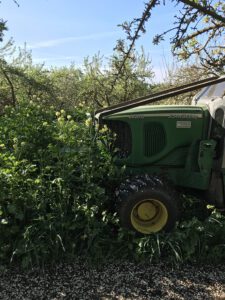
Cover Crop Management
“There isn’t as much management as you think,” Rossow said at the workshop. An April termination has a net positive on a calculated basis with soil quality improvements reduced. A May to June termination will use 0 to 2 inches of water, and soil quality improvements increase.
Pushing termination out to July and August will maximize soil quality improvements. Rossow said that when managed as a whole system the cash crop can improve water use beyond our current understanding.
Cover crop costs include $15 to $32 per acre for inoculated seed. Seeder rental is $12 to $25 per acre, or seed can be flown on. Additional mows will increase costs.
On the flip side, investment in healthy soil will cycle 50 to 150 more units of N, will increase tree health and save costs on miticides and fungicides. Rossow said water holding capacity increases as soil organic matter increases. A 1% increase in soil organic matter can save 20,000 gallons more water per acre.
Oscar Elias with Sustainable Conservation dispelled some common misconceptions about cover cropping during the workshop. The No. 1 misconception is water use by a cover crop causing Groundwater Sustainability Agencies to disincentivize cover crop planting through water allocations.
Elias said crop termination is the key to water benefits from cover crops.
“Keep roots in the ground and biomass on top.”
A 2024 collaborative study from Sustainable Conservation, CDFA, USDA and University of California found current patterns in the implementation of the Sustainable Groundwater Management Act may create unintended barriers in realizing benefits of cover cropping. The study recommended providing the information and support needed to reduce SGMA-related barriers to adoption.
Link to the study: cdfa.ca.gov/oefi/efasap/docs/2024/Sustainable_Conservation-Cover-Crop-SGMA-Report.pdf.
Rossow said that planted cover crops is not yet a mainstream management practice in almond production.
“From a management perspective, they believe it is cheaper to spray a preemergent. They are not calculating the soil benefit.”

Cecilia Parsons
Cecilia Parsons has lived in the Central Valley community of Ducor since 1976, covering agriculture for numerous agricultural publications over the years. She has found and nurtured many wonderful and helpful contacts in the ag community, including the UCCE advisors, allowing for news coverage that focuses on the basics of food production.
She is always on the search for new ag topics that can help growers and processors in the San Joaquin Valley improve their bottom line.
In her free time, Cecilia rides her horse, Holly in ranch versatility shows and raises registered Shetland sheep which she exhibits at county and state fairs during the summer.








